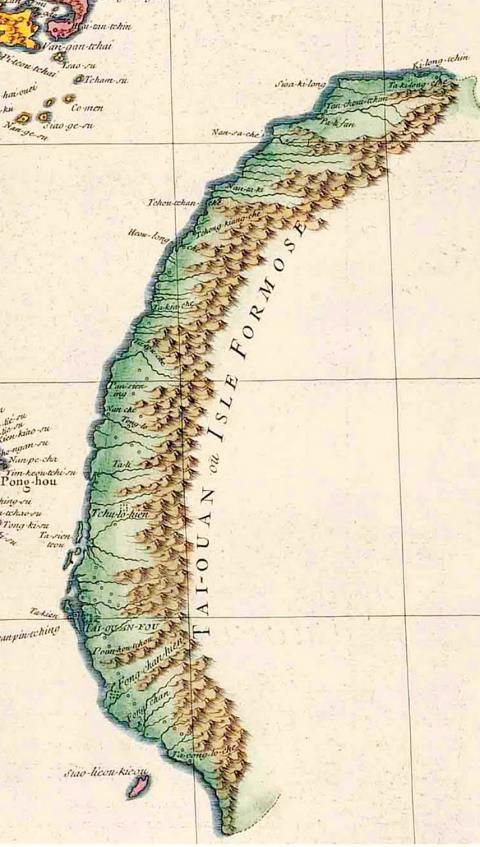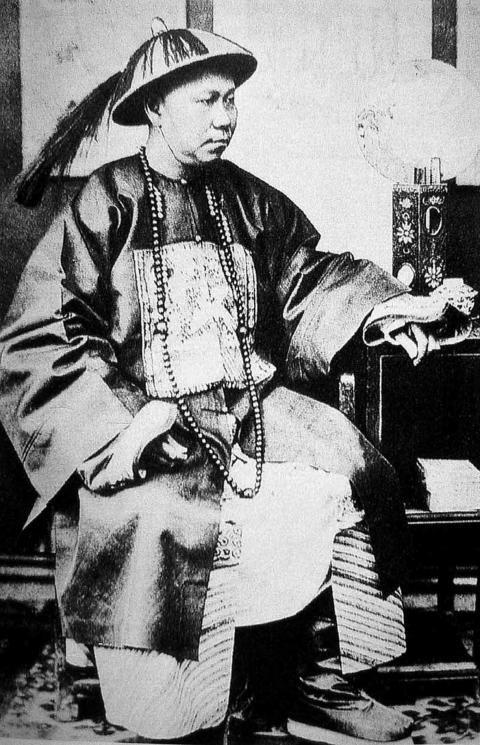Taiwan in Time: May 9 to May. 15
In 1874, former Xiamen consul Charles Le Gendre published a pamphlet titled, Is Aboriginal Formosa a Part of the Qing Empire? An Unbiased Statement of the Question.
The topic of interest was timely as it encapsulated much of the international debate before and after the Japanese military expedition to the Hengchun Peninsula (恆春半島 ) in response to the killing of 54 shipwrecked Ryukyuan sailors by Paiwan Aborigines.

Photo courtesy of Wikimedia Commons
Le Gendre had negotiated with Aborigines several years prior when they killed several shipwrecked Americans. He later traveled to Japan and became a political consultant who encouraged Japan to colonize the Aboriginal areas of Taiwan, as he considered them to belong to no country.
The military expedition and the resulting conflict, known as the Mudan Incident (牡丹社事件), ended with the Qing paying the Japanese to retreat. After the incident, the imperial court, which had long seen Taiwan as a backwater province unworthy of development, started to pay more attention to what was then still part of Fujian Province.
BEYOND REACH

Photo courtesy of Wikimedia Commons
Historian Wu Mi-cha (吳密察) writes in the preface to The Expedition to Formosa (征臺記事) that the Qing considered Taiwan, in its own words, “beyond the reach of our whip.”
The imperial court restricted cross-strait immigration and forbade settlers from moving into the eastern and southern regions populated by Aborigines as a form of population control, partially in fear of Taiwan becoming a sanctuary for renegades — not unlike the time when anti-Qing leader Cheng Cheng-kung (鄭成功), better known as Koxinga, used it as his base in 1661. Few troops were stationed to prevent a mutiny, Wu writes.
The Qing had always expected unrest to come from within — so it was a surprise when they heard that Japan had attacked, even though the troops landed on the Hengchun Peninsula, one of the Aboriginal areas.
Historian Lin Cheng-jung (林呈蓉) writes in her book, The Truth Behind the Mudan Incident (牡丹社事件的真相) that one required a separate passport — which curiously had to be obtained through the British consulate in Kaohsiung or Tainan — to enter such areas. The passport clearly stated that the region was outside of government jurisdiction.
Although Japanese troops landed on Taiwan on May 2, 1874, the Qing did not formally respond until May 11, when it released a statement requesting the Japanese to withdraw its troops, claiming that Japan had violated the Sino-Japanese Friendship and Trade Treaty, signed only three years previously.
On May 23, a ship carrying a Qing official arrived, demanding that the Japanese withdraw. Lin writes that the official did not even disembark, delivering the message and heading back to China — a telling sign the the empire was in decline, as it could not even send an army to deal with the fewer than 3,000 Japanese soldiers suffering from various tropical diseases.
OUT OF THE BACKWATERS
It was not until the Japanese and the Aborigines had already fought their battles and were in peace talks that Shen Baozhen (沈葆楨), China’s minister of naval affairs, arrived on June 21.
Lin writes that Shen not only did not protest Japan’s behavior, but stated his regret in “not being able to aid in the punishment of the Aborigine perpetrators.” In the prefectural capital of Tainan, Qing officials posted public notices stating that the government had obtained word from Japan that no more locals would be harmed, creating the false impression that they were in charge.
Imperial policy on Taiwan changed due to this event, realizing that passive governance would only lead to similar incidents and further questioning of its authority. China finally started developing the territory it had claimed since 1683.
Shen spent about a year in Taiwan after the incident as imperial commissioner. He commissioned Western-style fortifications in Tainan, including the Eternal Golden Castle fortress (億載金城), hired Western experts to help train soldiers, experiment with mechanical coal mining and install electricity, and he sent naval students to study in Europe.
First of all, per Shen’s suggestion, the government lifted the immigration restrictions and the ban on entering Aboriginal areas, and in fact even encouraged it. To “open up” and pacify (often by force) the Aboriginal mountain areas, three major roads were built in the north, central and south. Shen also changed the administrative structure of Taiwan.
To prevent more shipwrecks, the Qing — partly under international pressure — commissioned the construction of the Oluanpi Lighthouse (鵝鑾鼻燈塔) at the southernmost point of Taiwan a year later. Shen also divided Taiwan into smaller administrative regions, and Taipei Prefecture was born during this time.
Despite the Qing’s efforts, Taiwan was invaded again a decade later when the Sino-French war spilled across the strait.
Taiwan in Time, a column about Taiwan’s history that is published every Sunday, spotlights important or interesting events around the nation that have anniversaries this week.

Most heroes are remembered for the battles they fought. Taiwan’s Black Bat Squadron is remembered for flying into Chinese airspace 838 times between 1953 and 1967, and for the 148 men whose sacrifice bought the intelligence that kept Taiwan secure. Two-thirds of the squadron died carrying out missions most people wouldn’t learn about for another 40 years. The squadron lost 15 aircraft and 148 crew members over those 14 years, making it the deadliest unit in Taiwan’s military history by casualty rate. They flew at night, often at low altitudes, straight into some of the most heavily defended airspace in Asia.

Many people in Taiwan first learned about universal basic income (UBI) — the idea that the government should provide regular, no-strings-attached payments to each citizen — in 2019. While seeking the Democratic nomination for the 2020 US presidential election, Andrew Yang, a politician of Taiwanese descent, said that, if elected, he’d institute a UBI of US$1,000 per month to “get the economic boot off of people’s throats, allowing them to lift their heads up, breathe, and get excited for the future.” His campaign petered out, but the concept of UBI hasn’t gone away. Throughout the industrialized world, there are fears that

Like much in the world today, theater has experienced major disruptions over the six years since COVID-19. The pandemic, the war in Ukraine and social media have created a new normal of geopolitical and information uncertainty, and the performing arts are not immune to these effects. “Ten years ago people wanted to come to the theater to engage with important issues, but now the Internet allows them to engage with those issues powerfully and immediately,” said Faith Tan, programming director of the Esplanade in Singapore, speaking last week in Japan. “One reaction to unpredictability has been a renewed emphasis on

Taiwan’s democracy is at risk. Be very alarmed. This is not a drill. The current constitutional crisis progressed slowly, then suddenly. Political tensions, partisan hostility and emotions are all running high right when cool heads and calm negotiation are most needed. Oxford defines brinkmanship as: “The art or practice of pursuing a dangerous policy to the limits of safety before stopping, especially in politics.” It says the term comes from a quote from a 1956 Cold War interview with then-American Secretary of State John Foster Dulles, when he said: ‘The ability to get to the verge without getting into the war is